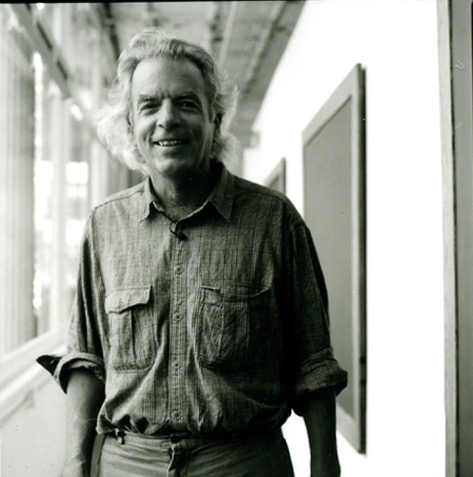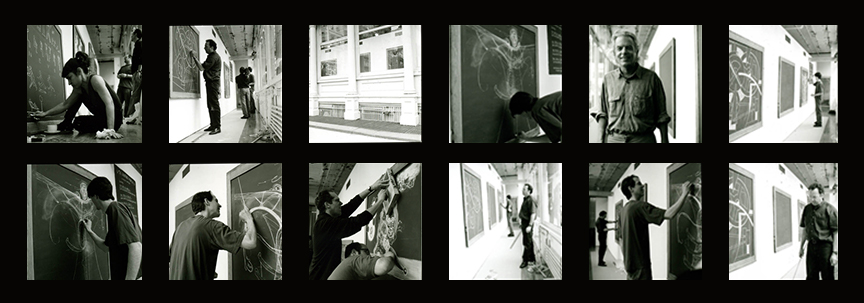Being an Artist
In 1997, I curated a show in the window of TZ Art gallery in New York City called “The Chalkboard Chronicles.” The show included a month long rotating exhibit with three large chalkboards that I found in a rummage store in Philadelphia. Twelve artists were invited to do their work on 3 chalkboards. After each week the boards were erased and 3 more artists took their turn. During this time all the artists were interviewed on camera, and filmed while making their work.
The artists included: Spalding Gray, Christopher Brooks, Carol Diehl, Richard Hull, David Humphrey, Phillip Johnson, Drew Beattie and Daniel Davidson, Ilona Granet, Gary Komarin, Walter Martin and Paloma Muñoz, Elliott Puckette and Ray Smith.
Highlights of the project include the late Spalding Gray’s monologue in chalk, telling the story of a childhood school experience, ending with a moving acknowledgement of his father.
Filmmaker Scott Sinkler did a masterful job of shooting the event and we ended up with 8 hours of film to work with.
In 2007 the film and video producer Jeff Wolfe joined forces with me to take these hours of original footage and start the process of producing a documentary film. This was the beginning of a ten year project that we just completed.
In this long process of taking the raw footage and transforming it into an interesting short documentary film, we ended up interviewing a lot of the artist almost 20 years after the event. These interviews ended up creating a much broader context for the film. The sense of the “march of time” added to the overall conversation about impermanence. It also opened up a conversation about what being an artist is all about over a life time.

The creative Process
My original idea was to explore the relationship of where and how artwork is done, and what happens to it after it is completed to how an artist engages with the work.
It gives a rare opportunity for the public to witness the creative process. It also challenged the artists in both working in public, and in having the product of their creativity erased after a short period of time.
All things that appear on the surface to be anathema’s to how artist usually work; Alone, private, and out of site.
During the original project, we interviewed each artist before they began. We talked to them while they were working, and after the work was completed. The association of a chalkboard to memories of school seemed to be pervasive, mostly traumatic or at least unpleasant memories. This added to the confront the chalkboards presented.
Then there was just the inevitable quandary of what to draw, what to do? What was so fascinating to me was the effort, the engagement, and the thinking that all of the artists brought to the process. I wasn’t sure how serious or not they would take it. The film captures in a very real way the challenges, the doubt, the risk taking, the second thoughts and just plain anxiety of making art. What was revealed was that each artist brought the same intensity to this seemingly trivial pursuit that they would in their studio. And the fact that it was going to be erased did not preclude a major effort on their part. The results in every case was compelling. The work produced was substantial, complete and even ambitious at times.
While most of the work done was visual images, sometimes with words, Spalding Gray’s contribution was of course written. As with the earlier discussion of process and bringing oneself to the game, Spalding was thoroughly engaged. He himself noted in the interview that this was exactly how he works in creating his monologues. He begins with an idea and then expands on it and follows it where it goes. In this case it ended with a profoundly beautiful paragraph about appreciating and forgiving his father after he himself had children.

Impermanence
The film was about impermanence in relationship to the creative process. It explores our attitudes, our sense of our selves as human beings making our mark as artists. It is a conversation about what it is to be an artist, and a human being.
Seven years after the project, Spalding took his own life. Along with the great loss of a friend and artist, I think of this film as capturing the great man in a moment of truth and self reflection. Indeed, it speaks to the process of making art, in all of its vulnerability and contradictions.
The film was completed this fall and we are in the process of entering into film festivals and scheduling screenings. I will be following this up with invitations to see the film!
